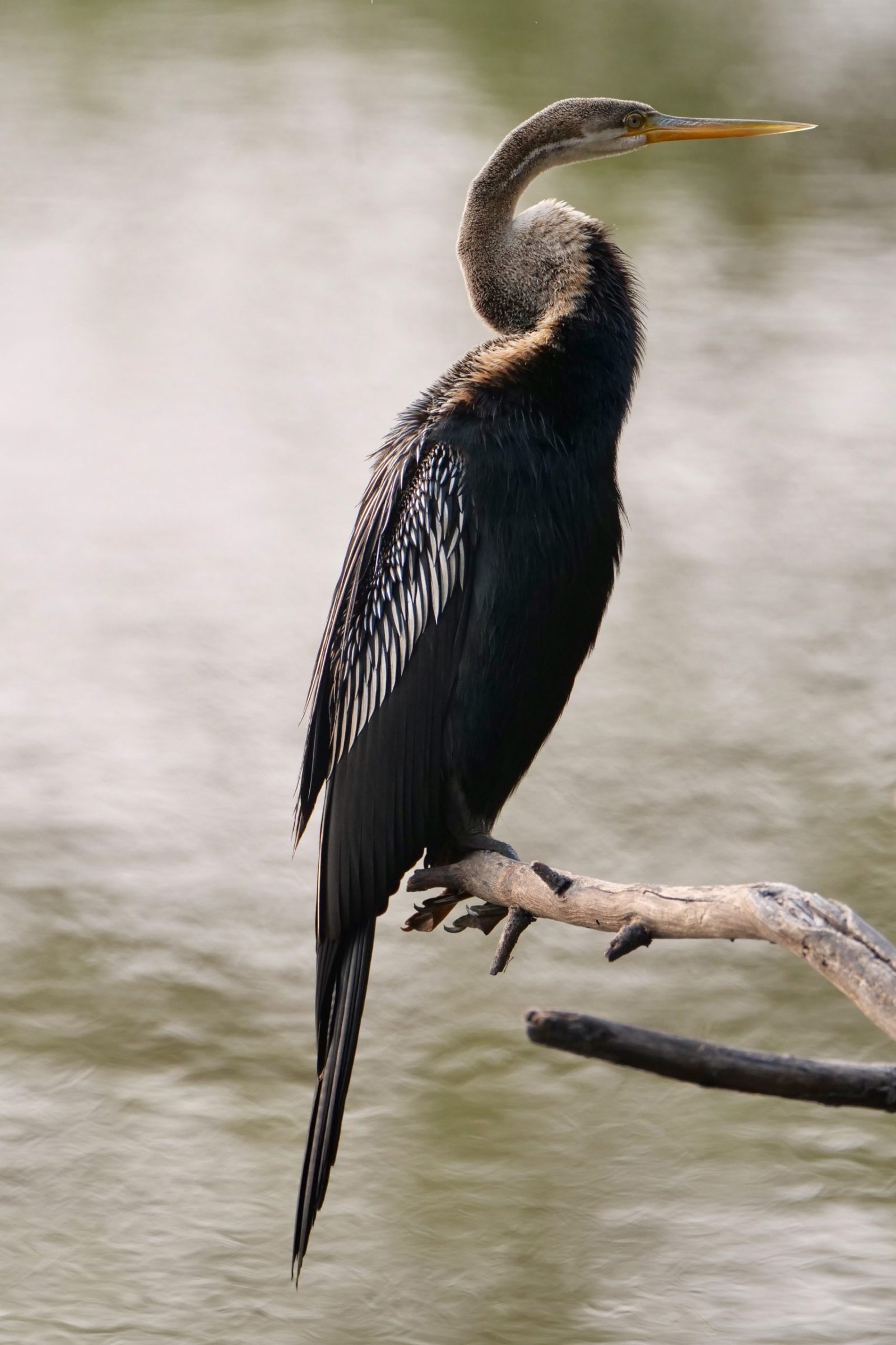An attentive observer, watching a non-sleeping bird, will very rarely see a serene creature.
For most of their waking moments, most birds are obviously keenly aware of their vulnerability to predators, their opportunities as predators, and/or of how best to defend or advance their “place” within an ever-competitive hierarchy.
(photo is copyright Doug Spencer, taken at 4.33 pm on 05 February in the Bharatpur Bird Sanctuary, Keoladeo National Park, Rajasthan)
The pictured bird is an Asian Darter, Anhinga melanogaster.
Anhinga is a genus of just four species.
The Darters are also known as “snake birds”.
Presumably, when I photographed it, this individual had completed the drying of its no-longer-outstretched wings, and it had recently eaten.
Whenever next it hunts, this seemingly-serene individual will once again become a dramatically ferocious spear-fisher, diving upon its prey, and using its beak to impale a fish.
Then, bird and fish will engage in a furious struggle, which – if the bird wins – ends with a spectacular example of “swallowing, whole”.
As it happens, I did manage to see and photograph just such an event; post-pandemic, it may be the subject of Pelican Yoga’s first “back to normal” post.
—
Quiet Now is one of the best-known compositions by Denny Zeitlin (born 1938 in Chicago), who has for almost his entire adult life been a “full time” professional in two fields.
He finds both equally fascinating.
For him, each benefits the other.
Reportedly, he is a distinguished psychiatrist.
Definitely, Zeitlin is a superb, highly imaginative pianist; in fact, one of very few living jazz pianists who are in the same league, artistically, as a Keith Jarrett or a Herbie Hancock.
His excellent website addresses both sides of his “working” life, plus his love of fine wine.
This version of Quiet Now is from Zeitlin’s performance at the 1983 Berlin Jazz Festival:
Zeitlin’s 2010 album Precipice documents a 2008 solo concert.
It is one of the most thoroughly satisfying solo piano albums I have ever heard; the piano sound is exemplary, no cuts are too much alike, and they all reward repeated, close attention.
The Zeitlin-penned titlepiece is its truly grand finale:
Zeitlin is verbally eloquent too:
